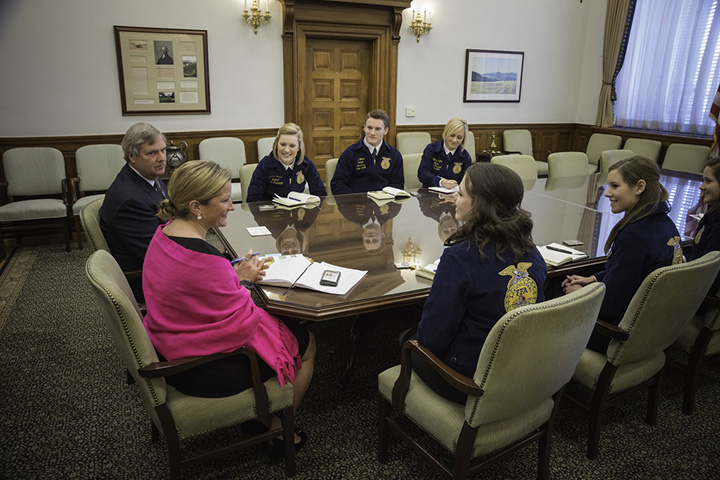Despite burgeoning urban populations, Future Farmers of America (FFA) demonstrated record involvement this year with about 680,000 members. In Tenino, Washington, the student-led FFA chapter is building community leaders.


Despite burgeoning urban populations, Future Farmers of America (FFA) demonstrated record involvement this year with about 680,000 members. In Tenino, Washington, the student-led FFA chapter is building community leaders.
Geraldine Maxfield, the local agriculture teacher and head of the FFA chapter, told the Thurston Talk that she sees the club’s role extending beyond the development of interest or skill in agriculture: “I’m a firm believer that when kids leave here, they are going to be good citizens.”
Maxfield, a Tenino native and graduate of Chico State (CA), has been running the FFA for almost 25 years. The organization has been a near constant presence in her own life, as she was an active participant throughout her own high school and college education.
According to the FFA website, the organization’s mission is to make “a positive difference in the lives of students by developing their potential for premier leadership, personal growth and career success through agricultural education.” Tenino’s chapter is just one of 8,500 nationally.
Educators are increasingly finding that it is easier to motivate students when learning is seen to have consequences outside of academic grades. Hence, the recent surge of interest in service-learning projects. Maxfield says of FFA, “The idea is that they are taking what they are learning in the classroom and applying it outside.” It turns out that students relish the opportunity to take responsibility for their own learning and the community’s well being.
In Tenino, FFA members participate in a range of activities throughout the year, many of which involve community service: running a community garden, hosting a holiday wreath sale to raise donations for a local charity, collecting food donations, and even constructing a house for the Seattle homeless. All these various projects really are student-led. Maxfield provides direction for the students, but ultimately she says, “it’s all about providing opportunities to plan and organize.”
The chapter also takes students on several field trips each year. These trips include stops at colleges so that students can explore environments where they could continue to build and refine their skills. “To help them become productive members of society, they need to have something to offer to the community. Whether it’s learning a trade or going to college,” says Maxfield.
This likely sums up why Maxfield, and subsequently the chapter she stewards, have been so successful. She is firm in her belief that educators need to be thinking of their students as citizens as well as scholars, and she gives them countless opportunities to develop in both facets.
Rural students like those in Tenino are no small part of American education; they comprise 28.9% of all non-charter public school students. The Institute for Advanced Studies in Culture studied rural schools as part of the School Cultures and Student Formation Project to better understand how schools and organizations like FFA interact. Editors James Davison Hunter and Ryan S. Olson write in The Content of Their Character, “Character in [rural schools] involved strong links to the local community and thus the obligation to represent one’s community well.”
In Tenino, FFA is one of those strong links to the community.
For rural communities, keeping the leaders that they develop is a perennial challenge. Maxfield isn’t worried. She grew up in Tenino and returned to Tenino to teach agriculture. Living to Serve is one way that FFA equips students to serve their communities. They provide a planning guide that anyone can use to put together a service learning project.